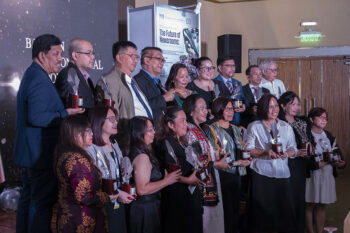
(Statement of 1Sama Coalition, a loose movement of Sama professionals from across vocations and professions).
March 18 marks the 55th Anniversary of the Jabidah Massacre and the Bangsamoro Day, a day to honor the Bangsamoro people’s struggle for self-determination and autonomy. However, on this historic occasion, we cannot forget the missing Sama narrative in the Bangsamoro struggle.
The Sama people is the largest maritime ethnolinguistic group in insular Southeast Asia numbering around 1.1 million. They can be found mainly in Brunei, Indonesia, Malaysia and the Philippines. They are among the first people to embrace Islam in the Philippines, and their mosque at Bohe’ Indangan, Simunul, Tawi-Tawi, is the oldest in the country. It is this embrace that embolden them to fight against colonial powers.
Let us be reminded that when Shariff Kabunsuan arrived in the mouth of Pulangi River and eventually established the Maguindanao Sultanate, he was accompanied by Sama warriors and seafarers.
It was in the royal court of Dungon at Tana’ Mehe (Tawi-Tawi Mainland) that the idea of forging the first Moro alliance and arguably the strongest alliance among the sultanates of Sulu, Maguindanao, and Buayan was forged. The Sama warriors and seafarers were integral part of this tri-sultanate alliance against colonial power.
When the Spaniards finally found the real naval strength of the Sulu Sultanate, the Sama Bangingi’ suffered greatly in 1848, when their homeland in Tongkil, Sulu, was destroyed. Those accosted by the colonial army were brought first to Manila and then to Cagayan Valley in Northern Philippines, thus begun the diaspora of tears and blood of forgotten Sama who suffered for their religion and their Moro culture. This is the Sama Bangingi’ diaspora known today.
Dapitan, Jose Rizal’s home while on exile in Mindanao, is no ordinary place because its beginning is tied to the Kedatuan of Bool or the Kingdom of Dapitan on Panglao Island and ruled over present-day Bohol in the 13th century and later re-established in present-day Dapitan in Zamboanga del Norte by Lutaos, another term used by the Spaniards for the Bajau warriors and seafarers.
Fast forward to the 1940s, the Sama people fought the Japanese invasion until they left our shores. The Sama were also involved in the fight against Martial Rule in unison with their fellow Moros across the homeland.
The Sama people’s involvement in the Bangsamoro struggle is often overlooked, with their voices being silenced and their perspectives being ignored. Camp Sofia in Simunul, Tawi-Tawi, was the training hub and catalyst for Moro secessionist movement. The Jabidah Massacre, which erupted on March 18, 1968, started at this camp and many recruits were overwhelmingly Sama youth and adults.
However, this aspect of the Bangsamoro struggle is often forgotten, and the Sama people’s contributions have been overlooked. Prominent figures like Justice Abdulwahid Bidin, the first Moro Associate Justice; Santanina Rasul, the first Moro female senator; Prof Nur Misuari, leader of the Moro secessionist movement; the pioneer Moro swimming Olympians like Bana Sailani, were all Sama by ethnicity.
The latest injustice against the Sama people is the absence of Sama representation in the second term 80-seat Bangsamoro Transition Authority (BTA), which became known as Black September on social media. This exclusion is a grave injustice that will resonate among the succeeding Sama generations.
Correcting the historical injustice on the Bangsamoro will not be complete without the Sama narrative in the Bangsamoro struggle. The National Government and the Bangsamoro Transition Authority (BTA) must rectify the exclusion of the Sama people and ensure their equitable access to the fruits of the Bangsamoro struggle that they rightfully deserve. The healing of the Sama wounds can begin through appropriate recognition of their rightful place in the struggle, the rightful rectification of Sama voice as well as those of the Badjao[1], Yakan, and Jama Mapun[2] voices, in the halls of governance.
We call on the Government, national and regional, to direct appropriate agencies to undertake documentation and research activities on this matter. There are few remaining Jabidah recruits still alive and as the days go by so is their story taken into oblivion.
We call on fellow civil society organizations and media outfits to help us amplify the Sama, Badjao, Yakan and Jama Mapun cause for representation and equity.
Let us work together towards a just and peaceful resolution that upholds the rights and dignity of all the peoples of the Bangsamoro region. Without the minorities like the Sama, Badjao, and Jama Mapun, there is no inclusion and moral governance to speak of.
[1] The Badjao is considered a Sama subgroup that is undoubtedly the most marginalized among all of the Moro ethnolinguistic groups.
[2] The Yakan and Jama Mapun, together with the Sama Abaknon of Capul Island, Northern Samar, are considered language siblings of the Sama.
